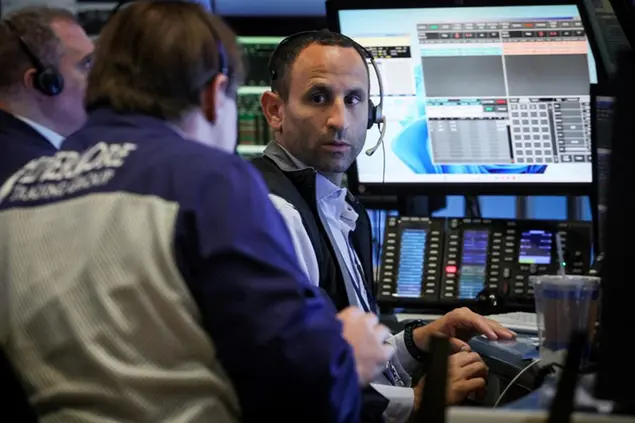PHOTO
NEW YORK: U.S. Treasury yields were mixed on Monday as investors awaited guidance from the U.S. central bank and June inflation data later this week to assess the next moves for government bonds.
Benchmark 10-year yields were last at 4.269%, slightly lower than on Friday. Two-year yields, which are more directly linked to changes in monetary policy expectations, were at 4.618%, up from 4.599% on Friday.
Yields, which move inversely to prices, had fallen sharply on Friday after closely watched jobs data showed a weakening U.S. labor market, which bolstered expectations that the Federal Reserve will begin to cut interest rates in September.
Fed Chair Jerome Powell's testimony before the Senate on Tuesday and the House on Wednesday could give investors more clues on the likely direction of rates. Some expect Powell to strike a relatively dovish tone in light of recent data, after saying in a speech last week that the U.S. economy was back on a disinflationary path.
"You've had some less than favorable economic data so I think, while he's not going to be over the top dovish, he'll be more dovish than he is hawkish in my opinion, and then we'll see what CPI brings," said Tony Farren, managing director at Mischler Financial Group.
A Federal Reserve Bank of New York consumer survey released on Monday showed inflation a year from now was seen at 3% as of June, down from the 3.2% increase expected in May.
The release on Thursday of the June Consumer Price Index (CPI) could inject more optimism among bond investors about a possible central bank shift to lower rates, if it comes within expectations. The probability of a 25 basis point Fed rate cut in September stood at 71% on Monday, with traders of futures contracts tied to the Fed policy rate betting on a total of two 25-point cuts for the whole of 2024.
Treasuries on Monday were also reflecting moves in European markets, where French government bond yields fell to two-week lows after Sunday's election resulted in a hung parliament, assuaging fears of a far right victory.
"Some of the geopolitical risk in Europe is tempered and that might be helping keep yields in the U.S. in check for now," said Matthew Miskin, co-chief investment strategist at John Hancock Investment Management.
Developments around the U.S. presidential elections could, on the other hand, keep driving the U.S. government bond market as pressure mounts on President Joe Biden to withdraw his re-election bid.
Long-term Treasury yields rose after Biden's shaky performance against Republican rival Donald Trump in the first presidential TV debate last month, as investors anticipated higher fiscal deficits and inflationary policies under a potential second Trump presidency.
Specifically, the curve comparing yields of different Treasury maturities 'bear-steepened' as long-dated yields have risen faster than short-dated ones.
"Investors' response to a new candidate from the Democrats is uncertain and likely contingent on the individual," BMO Capital Markets strategists said in a note.
"That being said, as demonstrated by the recent price action, an increase in the probability that Trump retakes the White House has been a bear steepener in Treasuries, suggesting the opposite will be true in the event the Democrats put forward a different contender," they wrote.
A closely watched part of the U.S. Treasury yield curve measuring the gap between 10- and two-year yields, an indicator of economic expectations, was at a negative 35 basis points on Monday, a slightly deeper inversion than on Friday.
(Reporting by Davide Barbuscia; editing by David Evans and Richard Chang)
